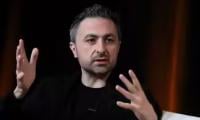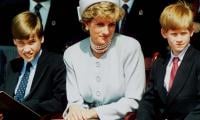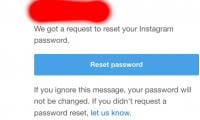US approves new coronavirus antigen test with fast results
ISLAMABAD: US regulators have approved a new type of coronavirus test that administration officials have promoted as a key to opening up the country.
The Food and Drug Administration on Saturday announced emergency authorization for antigen tests developed by Quidel Corp. of San Diego. The test can rapidly detect fragments of virus proteins in samples collected from swabs swiped inside the nasal cavity, the FDA said in a statement.
The antigen test is the third type of test to be authorised by the FDA, international media reported.
Currently, the only way to diagnose active COVID-19 is to test a patient’s nasal swab for the genetic material of the virus. While considered highly accurate, the tests can take hours and require expensive, specialised equipment mainly found at commercial labs, hospitals or universities.
A second type looks in the blood for antibodies, the proteins produced by the body days or weeks after fighting an infection. Such tests are helpful for researchers to understand how far a disease has spread within a community, but they aren’t useful for diagnosing active infections.
Antigen tests can diagnose active infections by detecting the earliest toxic traces of the virus rather than genetic code of the virus itself.
The FDA said that it expects to authorize more antigen tests in the future.
Quidel said Saturday that the test can provide an accurate, automated result in 15 minutes. The FDA’s emergency authorisation “allows us to arm our health care workers and first responders with a frontline solution for COVID-19 diagnosis, accelerating the time to diagnosis and potential treatment,” Douglas Bryant, CEO of Quidel, said in a statement.
A genetic material test by Abbott Laboratories used at the White House also takes about 15 minutes.
The company said it specialises in testing for diseases and conditions including the flu and Lyme disease.
Quidel stock has more than doubled in value since the beginning of the year, closing Friday at $158.60.
The U.S. has tried to ramp up testing using the genetic method, but the country’s daily testing tally has been stuck in the 200,000 to 250,000-per-day range for several weeks, falling far short of the millions of daily tests that most experts say are needed to reopen schools, businesses, churches and other institutions of daily life.
That’s led White House adviser Dr. Deborah Birx and other federal officials to call for a “breakthrough” in the antigen tests.
“There will never be the ability on a nucleic acid test to do 300 million tests a day or to test everybody before they go to work or to school, but there might be with the antigen test,” Birx told reporters last month.
Recently, the National Institutes of Health announced $1.5 billion in research grants aimed at fast-tracking the development of rapid, easy-to-use testing approaches — including antigen tests — by the fall.
Meanwhile, researchers at Columbia University have been working on if ultraviolet lamps can be used in stations, airplanes and schools to kill dangerous viruses.
UVC lamps have long been used to kill bacteria, viruses and molds, notably in hospitals and in the food-processing industry. As the coronavirus pandemic knocks world economies on their heels, this technology is experiencing a boom.
But UVC (for Ultraviolet-C) rays are dangerous, causing skin cancer and eye problems, and can be used only when no one is present.
The New York subway system, following the example of Chinese subways, plans to use ultraviolet lamps to disinfect its trains, but only during nighttime closures.
A team at Columbia´s Center for Radiological Research is experimenting with so-called far-UVC, rays whose wavelength of 222 nanometers makes them safe for humans but still lethal to viruses, the center´s director, David Brenner, told AFP.
At those frequencies, he explained, the rays cannot penetrate the surface of the skin nor of the eye.
That means they could be used in closed and crowded spaces where contamination risks run high, with potentially huge promise for use during the current pandemic.
In 2013, the Columbia team began studying the effectiveness of far-UVC against drug-resistant bacteria. It next examined the rays´ use against viruses, including the flu virus. Only recently did it turn its attention to the coronavirus.
"We were thinking, how can we apply what we are doing to the current situation," Brenner said.
But to test the impact of UVC on the extremely contagious coronavirus, the team had to move its equipment into a highly bio-secure laboratory at Columbia.
Experiments carried out starting "three-four weeks ago," Brenner said, have already made clear that UVC rays destroy the virus on surfaces within minutes.
The team next plans to test the lamps on viruses suspended in the air, as when an infected person coughs or sneezes.
In parallel, tests are being conducted to confirm that these rays are harmless to humans.
For 40 weeks now, the lab has exposed mice to far-UVC rays for "eight hours a day, five days a week, at intensities 20 times higher than we might think of using with humans."
The results?
After testing the rodents´ eyes and skin, "we have found absolutely nothing; the mice are very happy -- and very cute as well," Brenner said.
The experiment is set to continue for 20 more weeks.
The findings cannot be fully validated by the scientific community until all remaining steps have been taken, even if the team has already submitted its preliminary results to the journal Nature.
But the pressure to reopen the world´s economies has become so enormous that factories are accelerating their production of ultraviolet lamps without waiting.
"We really need something in situations like offices, restaurants, airplanes, hospitals," Brenner said.
If UVC lamps have already been in commercial use for two or three years -- notably in the diamond industry, where they can be used to distinguish artificial from real gems -- potential clients are now legion, say companies producing them.
"We felt for a long time this is a great application for this technology," said John Yerger, the CEO of Eden Park Illumination, a small producer based in Champaign, Illinois.
But with the pandemic, "the world has changed a lot in the last three months," he added.
And the US Food and Drug Administration has relaxed its regulation of tools or agents that can be used for disinfection, encouraging manufacturers to find a solution.
"There will be thousands and thousands of these things (UVC lamps) for sure," Yerger said. "The question is, will it be millions?"
"What we are seeing is a tremendous amount of customer interest" to produce lamps for airlines, cruise ships, restaurants, movie theaters and schools, said Shinji Kameda, chief operations officer in the US for Ushio, a Japanese manufacturer.
Production of its 222-nanometer lamps, sold for $500 to $800 and already used in some Japanese hospitals, will be stepped up in October, he said.
In the meantime, Brenner said he has been losing sleep.
"I spend nights thinking -- if this far-UVC project had started one or two years earlier, maybe we could have prevented the COVID-19 crisis," he said. "Not completely, but maybe we could have prevented it being a pandemic."
-
 Elon Musk To Introduce New Open-source Algorithm For ‘X’
Elon Musk To Introduce New Open-source Algorithm For ‘X’ -
 Jennifer Lawrence Faces Backlash For Rehoming Dog After Incident With Son
Jennifer Lawrence Faces Backlash For Rehoming Dog After Incident With Son -
 Prince William Gears Up For A Slap To The Face As Prince Harry Awaits Second Win
Prince William Gears Up For A Slap To The Face As Prince Harry Awaits Second Win -
 ‘High School Musical’ Alum Matt Prokop Arrested On Child Pornography Charges
‘High School Musical’ Alum Matt Prokop Arrested On Child Pornography Charges -
 Paris Hilton Gets Candid About Britney Spears' Wellbeing
Paris Hilton Gets Candid About Britney Spears' Wellbeing -
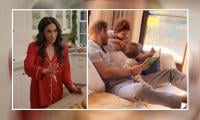 Prince Harry’s Return To The UK With Archie, Lilibet: ‘Will Meghan Finally Pull The Trigger?’
Prince Harry’s Return To The UK With Archie, Lilibet: ‘Will Meghan Finally Pull The Trigger?’ -
 Naomi Watts Gets Real About Impact Of Menopause On Her Eyes
Naomi Watts Gets Real About Impact Of Menopause On Her Eyes -
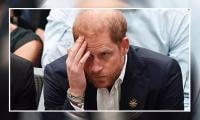 Fears Mount Against Prince Harry: ‘He’ll Record So That He Can Use Every Word’
Fears Mount Against Prince Harry: ‘He’ll Record So That He Can Use Every Word’ -
 Kristen Stewart Gets Honest About Future Plans
Kristen Stewart Gets Honest About Future Plans -
 Andrew Mountbatten-Windsor Under Fresh Scrutiny Over Royal Lodge
Andrew Mountbatten-Windsor Under Fresh Scrutiny Over Royal Lodge -
 'The West Wing' Actor Timothy Busfield Faces Arrest Warrant Over Allegations Of Child Sexual Abuse
'The West Wing' Actor Timothy Busfield Faces Arrest Warrant Over Allegations Of Child Sexual Abuse -
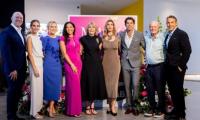 Mike Tindall Shares Photos With Wife Zara And Prince Harry's Friend
Mike Tindall Shares Photos With Wife Zara And Prince Harry's Friend -
 Iman Honours David Bowie On His 10th Death Anniversary With New Tattoo
Iman Honours David Bowie On His 10th Death Anniversary With New Tattoo -
 Zara Larsson Makes Provocative Political Statement
Zara Larsson Makes Provocative Political Statement -
 Danielle Brooks Recalls Hilarious Daughter Moment
Danielle Brooks Recalls Hilarious Daughter Moment -
 Tom Blyth Explains Rationale Behind Choosing 'lighter' Roles
Tom Blyth Explains Rationale Behind Choosing 'lighter' Roles

